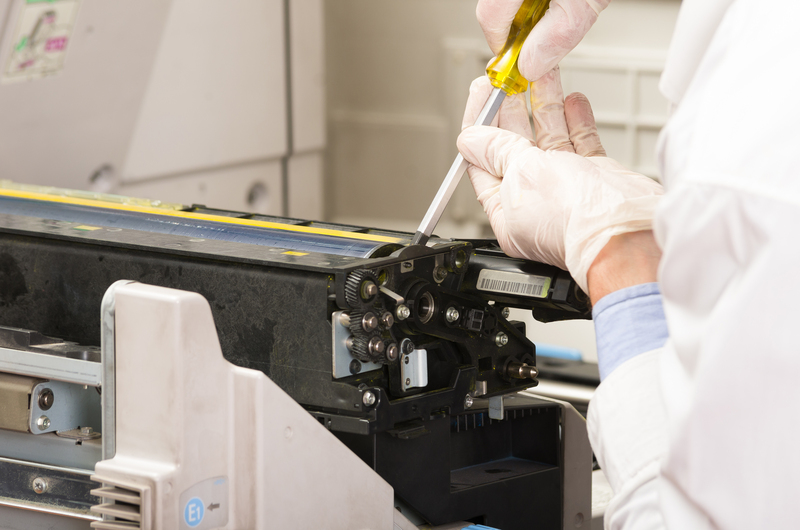How to Sort and Dispose of PPE Waste at Work and Home
PPE waste disposal has become a pressing concern due to the increased use of personal protective equipment, especially in workplace and household settings. Effective sorting and proper disposal of PPE waste are vital for both environmental protection and public health. Whether you are managing a business or looking to keep your home safe, knowing how to sort and dispose of PPE waste can help you stay compliant with regulations, keep your environment safer, and reduce environmental impact.
Why Proper PPE Waste Management Matters
- Environmental Impact: Improperly disposed of PPE like masks, gloves, and face shields can pollute water sources and harm wildlife.
- Public Health Safety: Used PPE may harbor viruses, bacteria, or chemicals, increasing the risk of transmission and contamination if not disposed of correctly.
- Legal Compliance: Both businesses and individuals can face penalties for not following proper waste management protocols concerning personal protective equipment.

Types of PPE and Their Waste Streams
Before learning how to handle PPE waste disposal at work or home, it's essential to understand the common PPE types and their respective waste streams.
Common Types of PPE Generating Waste
- Masks and Respirators: Disposable surgical masks, N95 respirators, and fabric face coverings.
- Gloves: Nitrile, latex, vinyl, and rubber gloves.
- Face Shields and Goggles: Plastic visors and safety goggles.
- Gowns and Aprons: Disposable or reusable textiles used in medical or cleaning environments.
- Shoe Covers and Head Covers: Used in healthcare and manufacturing industries.
PPE Waste Sorting: Step-by-Step Process
Sorting is the first critical step in responsible PPE waste management. Proper sorting prevents cross-contamination and ensures that each type of waste is handled appropriately.
Sorting PPE Waste at Work
- Set Up Clearly-Labeled Bins:
- Provide separate bins for different types of PPE such as masks, gloves, gowns, and face shields.
- Clearly label each bin (for example: "Used Masks Only", "Gloves Only").
- Educate Employees:
- Conduct regular training on how to sort PPE waste.
- Place instructional posters near collection points.
- Establish Collection Schedule:
- Monitor bins regularly and schedule frequent waste collection to avoid overflow and reduce risks.
- Use Color-Coded Bags:
- Adopt established systems (e.g., red bags for hazardous PPE waste, clear bags for recyclable items).
Sorting PPE Waste at Home
- Designate a PPE Waste Container:
- Use a lined, foot-pedal bin with a lid to minimize contact.
- Mark the bin as "PPE Waste" to avoid confusion with general household garbage.
- Keep PPE Waste Separate:
- Do not mix PPE items with general recyclables or organic waste.
- Replace Liners Frequently:
- Seal and remove bin liners regularly, minimizing the risk of contamination.
Handling Contaminated or Hazardous PPE Waste
Some used PPE, such as that in healthcare or cleaning environments, may be contaminated with infectious agents or hazardous chemicals. Special care must be taken with these items.
Guidelines for Handling Hazardous or Infectious PPE Waste
- Do Not Touch PPE Waste Directly: Always wear clean gloves when handling used PPE waste to prevent cross-contamination.
- Use Double-Bagging for Extra Protection: Double bagging minimizes the risk of puncture or leaks.
- Securely Seal Bags: Use strong ties or zip ties to prevent accidental spillage.
- Clearly Label Hazardous Waste: Use color-coded or clearly-marked bags as per your local regulations.
- Contact Specialized Waste Disposal Companies: For large quantities or highly-contaminated PPE, contract authorized hazardous waste handlers.
How to Dispose of PPE Waste at Work
Workplaces, especially those in healthcare, hospitality, or manufacturing, generate significant volumes of PPE waste. Proper disposal is not only a matter of compliance, but it is critical for staff and customer safety.
Main Steps in Workplace PPE Waste Disposal
- Follow Local Regulations:
- Each state or country has specific guidelines for PPE waste disposal. Familiarize yourself with local regulations and protocols.
- Arrange Regular Pickups:
- Coordinate with municipal or private hazardous waste companies for scheduled collections.
- Dispose of General and Hazardous PPE Appropriately:
- Regular PPE waste (e.g., masks from office settings) can often be disposed of with general waste, unless otherwise specified.
- Highly contaminated or medical PPE must be disposed of following medical waste handling directives.
- Document and Track Waste Disposal:
- Keep records of waste generation and disposal for audit and compliance purposes.
How to Dispose of PPE Waste at Home
At home, PPE waste disposal is just as crucial, especially when preventing the spread of infections within the household or the wider community.
Safe Steps for PPE Waste Disposal at Home
- Do Not Recycle Used PPE:
- Never place used masks, gloves, or face shields in recycling bins. Most PPE items are made from mixed materials and are not suitable for recycling via regular household programs.
- Seal Waste Before Disposal:
- Place all used PPE in a tied plastic bag.
- If anyone in your home is sick, double-bag and store the waste for 72 hours (if possible) before putting it out for collection.
- Wash Hands Thoroughly:
- Always wash your hands with soap and water for at least 20 seconds after handling PPE waste.
- Follow Local Waste Guidelines:
- Some jurisdictions have specific instructions for PPE disposal, especially in case of outbreaks. Check your municipal website for updated guidance.
PPE Waste Disposal Best Practices
Implement these best practices at work and home to ensure effective and responsible PPE waste management:
- Provide Sufficient Disposal Points: Place waste bins at convenient, easy-to-access locations.
- Post Clear Instructions: Use signage with diagrams and steps on how to sort and dispose of PPE waste.
- Keep Bins Covered: To minimize airborne transmission, always use bins with lids, ideally with foot pedals.
- Regularly Clean Waste Areas: Disinfect all surfaces in and around PPE disposal points frequently.
- Evaluate and Adjust Protocols: Periodically review waste management practices and update them as necessary for compliance and efficiency.
Recycling and Reuse Options for Certain PPE Items
While many types of PPE are not recyclable, some manufacturers and local programs are starting to offer solutions for sustainable PPE disposal.
- Specialty Recycling Programs: Some companies accept used masks and gloves for recycling or safe disposal (e.g., TerraCycle).
- Reusable PPE: Where possible, opt for washable cloth masks or gowns, and follow proper disinfection protocols to reduce single-use waste.
- Supplier Take-Back Initiatives: Certain glove and mask suppliers offer take-back schemes or trade-in programs to help manage waste responsibly.
Local Regulations and PPE Waste
Since rules regarding the disposal of personal protective waste can vary by region, it is crucial to stay updated with your local guidelines to avoid fines and foster better PPE waste management practices.
- Consult your city or country's official environmental or health department websites for the latest updates on PPE waste disposal.
- For workplaces, subscribe to industry newsletters or regulatory update services.
- Keep records of new directives and share them promptly with your team or household members.
Frequently Asked Questions (FAQ) About PPE Waste Disposal
Can PPE Be Put in the Recycling Bin?
No. Most PPE items, including disposable masks, gloves, and gowns, are not recyclable through general recycling programs due to their mix of materials and potential for contamination. Always dispose of them in the correct waste bin as per your local regulations.
What If I Have Large Volumes of PPE Waste?
If your workplace or home generates substantial volumes of personal protective equipment waste (such as during an outbreak or in healthcare settings), engage a licensed medical waste disposal service or coordinate with your local waste authority for special pickups.
Are There Eco-Friendly PPE Alternatives?
Yes! Increasingly, manufacturers offer biodegradable or recyclable PPE products. Consider using reusable masks and PPE made from sustainable materials when safe and appropriate.

Conclusion: Your Responsibility in PPE Waste Management
Properly sorting and disposing of PPE waste at work or home is vital to protect people, communities, and the planet. By following the best practices outlined above, you will:
- Minimize the risk of infection or contamination.
- Comply with local and international regulations.
- Support sustainability where feasible.
Further Reading and Resources
- CDC Guidance on Cleaning and Disinfecting Your Facility
- EPA: Disposing of Materials Potentially Contaminated with COVID-19
- WHO: Cleaning and Disinfection of Environmental Surfaces
- TerraCycle PPE Waste Recycling Programs
By taking responsibility for PPE waste at both work and home, you safeguard not only your wellbeing, but also that of your family, colleagues, and community. Make a habit of sorting and disposing of PPE waste properly.
